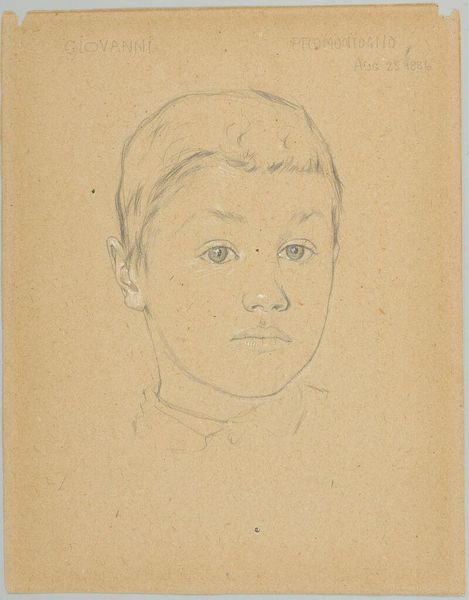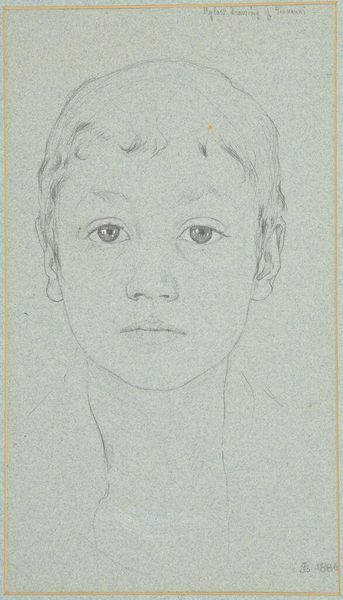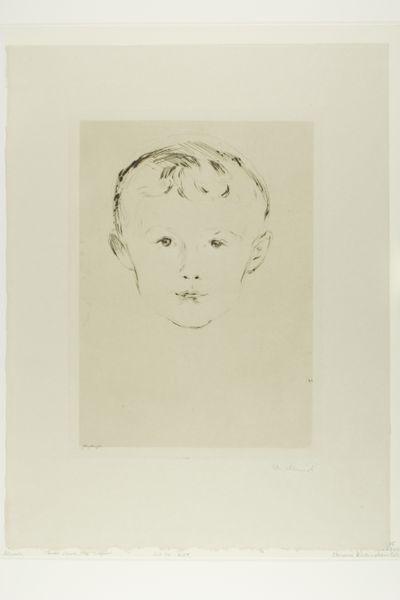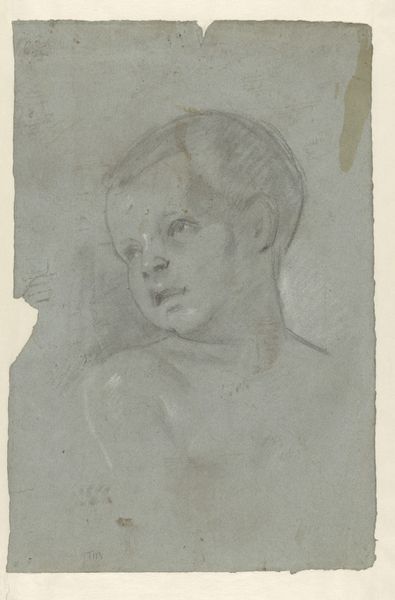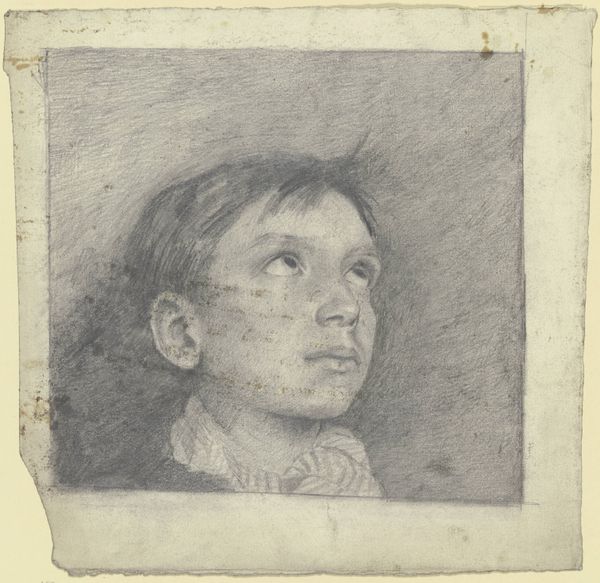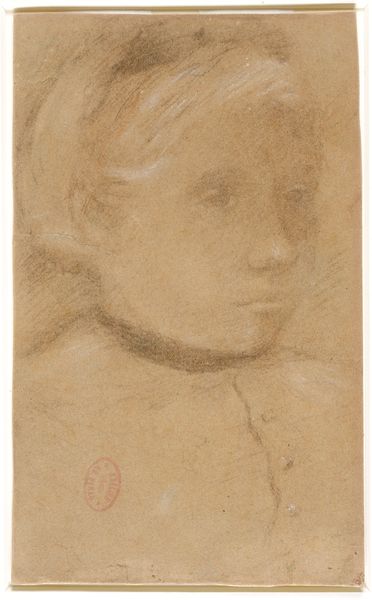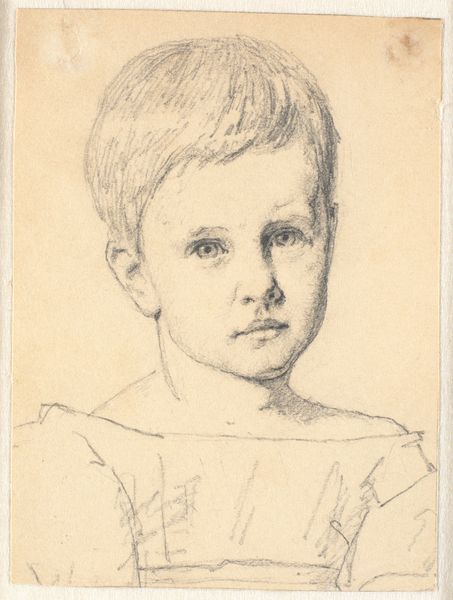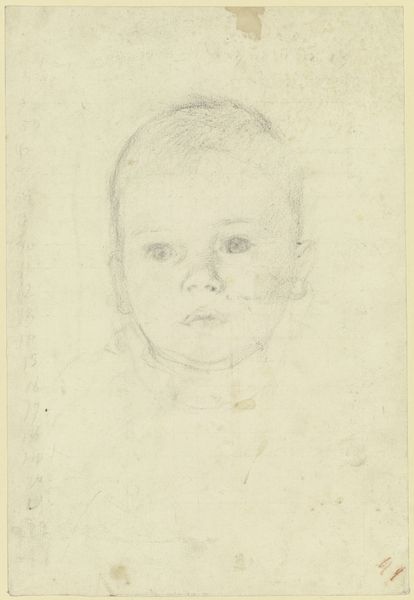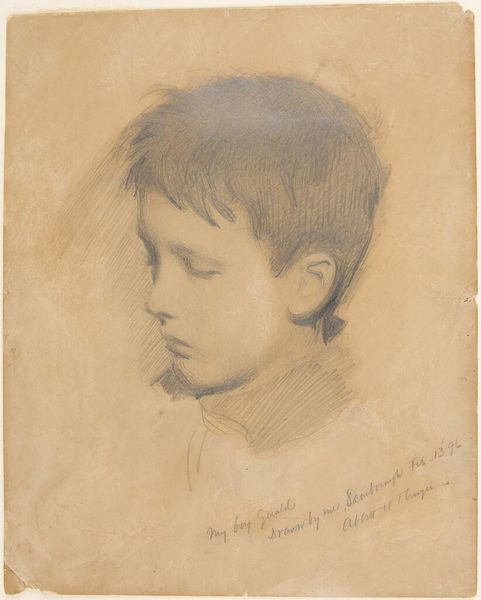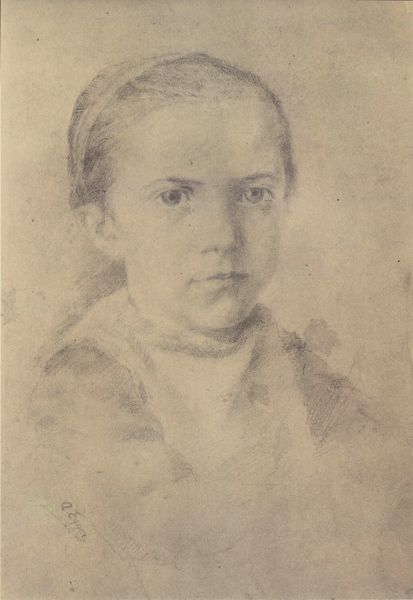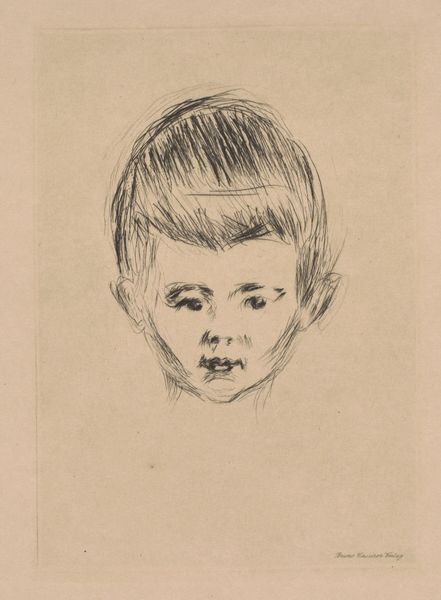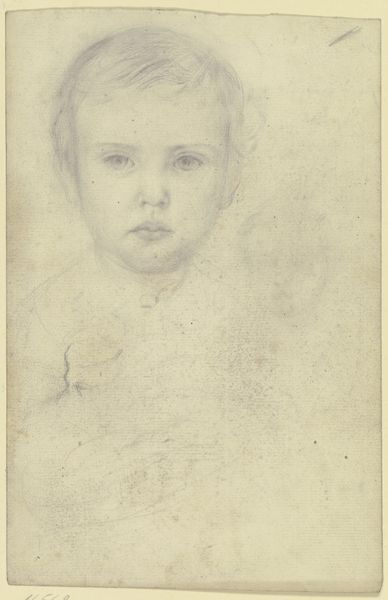
Portræt af senere Biskop Joh.Clausen som barn 1835 - 1836
0:00
0:00
drawing, pencil
#
portrait
#
drawing
#
pencil
Dimensions: 192 mm (height) x 158 mm (width) (bladmaal)
Editor: Here we have Christen Købke's portrait of the later Bishop Joh.Clausen as a child, created around 1835 or 1836 using pencil. It's intriguing how delicate and tentative the lines are. What's your interpretation of this drawing? Curator: I am particularly interested in Købke's material handling here. Consider the paper itself; it's aged, stained. The pencil work, though delicate as you mentioned, also shows a clear labor process. Look closely - you can see the build-up of graphite, the artist’s hand evident in each stroke. Editor: I see what you mean. So it’s not just about representing the bishop as a child, but also about showing the physical process of making the artwork? Curator: Exactly! And consider the social context. Portraiture was becoming more accessible during this period, but was still largely for the upper classes. A bishop’s son being rendered in a ‘simple’ material like pencil implies a specific set of values about craft and artistry circulating at that time. Editor: So, it's the interaction between the materials used and the subject’s social standing that gives this piece its real meaning? Curator: Precisely. And the accessibility, or relative lack thereof, that those materials would have presented, along with the artist’s specific labor, inform our understanding of the portrait as a commodity and a piece of cultural production. Think about the paper's origin, the pencil’s manufacture – these all tell a story beyond just the likeness of a young boy. Editor: That makes me consider the economics and craft involved, instead of just looking at it as a historical portrait. Thanks! Curator: Glad to shift the focus. Materiality gives voice to these quieter histories.
Comments
No comments
Be the first to comment and join the conversation on the ultimate creative platform.
